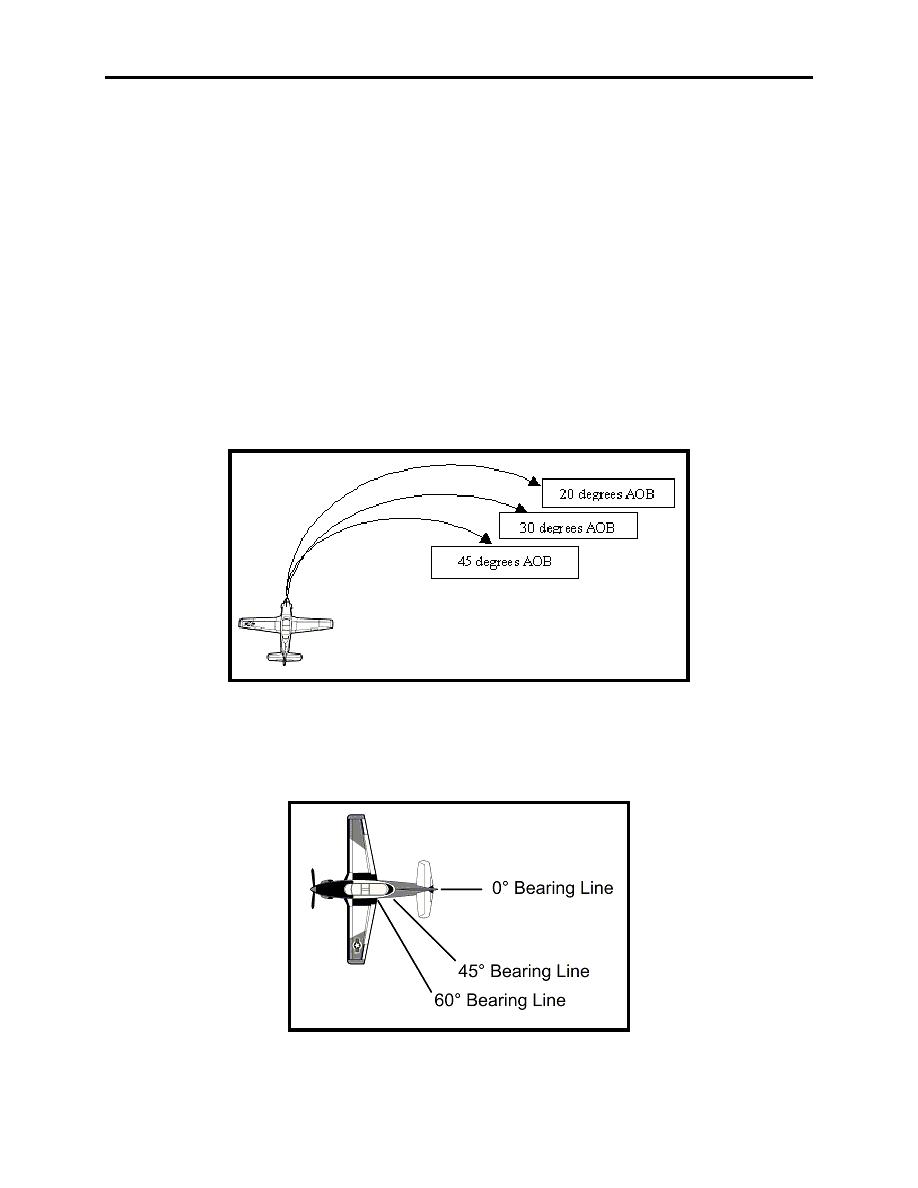 |
|||
|
|
|||
|
|
|||
| ||||||||||
|
|  CHAPTER THREE
T-34C PRIMARY FORMATION FLIGHT TRAINING
5.
Wing is slow to arrest lateral motion which results in Wing crossing too far to the other
side.
6.
Wing arrests the lateral relative motion prior to arriving on the opposite bearing line and
stabilizes under Lead's wing.
312. BREAKUP AND RENDEZVOUS EXERCISE
The breakup and rendezvous exercise separates the formation so that you can practice
rendezvous procedures. The concepts of radius of turns, bearing line, and pursuit curves are
critical to controlling closure rates and executing proper rendezvous procedures.
Radius of Turn (Figure 3-23). An aircraft's radius of turn is a function of bank angle and
airspeed. Higher bank angles have a shorter turn radius and lower bank angles have a larger turn
radius. Airspeed comes into play as well; an aircraft at 20 of bank at a high airspeed is going to
have a much larger turn radius than one at a slower airspeed.
Figure 3-23 Radius of Turn
Bearing Line (Figure 3-24). Bearing line is a coordinate system referenced from Lead's tail. It
helps you detect performance when rejoining on Lead while he is in a turn. The convention is
that Lead's tail is 0 and Lead's nose is 180.
Figure 3-24 Bearing Line
3-26 SECTION PARADE
|
|
Privacy Statement - Press Release - Copyright Information. - Contact Us |